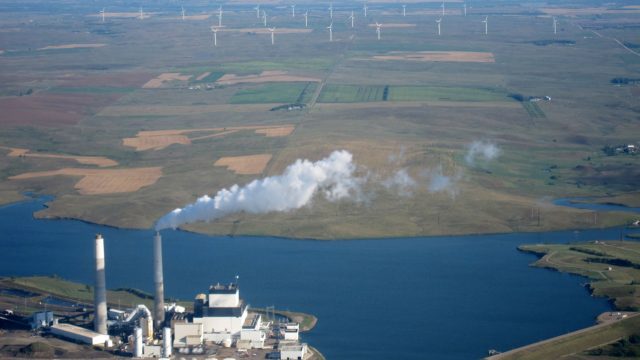The EPA's Power Plant Regulations Could Mean Shortages For North Dakota

Back in June I wrote a story for Watchdog about the potential impact of EPA regulations on North Dakota. At the time, Public Service Commissioner Brian Kalk said the impact “could be catastrophic.”
That’s not hyperbole. North Dakota is caught between the pincers of rising demand for power, driven by a booming economy and expanding population, and new federal regulations that are limiting our ability to build out more power generation capacity.
We may be able to meet that demand, but it’s going to come at a cost as Kalk’s fellow PSC member Randy Christmann told me. “As we shut down a select few coal plants or idle them back in order to meet the Democrats’ mandate, two things will have to happen,” he said. “The coal plants will have to charge more for the power they do produce since their sales will be less but their fixed costs remain unchanged, and we will have to decorate our landscape with more wind turbines to replace that lost generation. Because the wind is not dependable, we will also need to add more natural gas peaking generation to run when the wind is not blowing.”
Back in March, Rep. Kevin Cramer questioned an EPA official over power plant emissions regulations nothing that North Dakota has “a demand for over 2,000 megawatts…that’s not being met.”
Today at the Fargo Forum, Patrick Springer is catching up to this story. “Utility representatives and regulators Wednesday expressed concerns about maintaining the reliability of the electricity supply as power reserves dwindle and a wave of coal plant retirements looms,” he reports. “The crunch is apt to be most severe over the next five or six years as utilities prepare to meet new Environmental Protection Agency regulations calling for a 30 percent reduction in power plant carbon emissions from 2005 levels by 2030.”
A key problem, experts and utility executives told the North Dakota Public Service Commission meeting in Fargo, is the high degree of uncertainty in predicting the impacts on power reliability from the carbon reduction targets.
“This is the most challenging time I can think of in our industry,” said Gerry Cauley, who heads the North American Electric Reliability Corp., which oversees reliability of the U.S. bulk electricity system.
The carbon regulations are forcing utilities to “completely flip” the sources of their power in a “massive change out” in the shift from coal to other fuels.
“Everyone wants us to do all of that and keep prices low,” Cauley said.
Because utilities and regulators cannot predict the impact of carbon regulations on power reliability, it would be irresponsible to implement the rules, he said.
“You can’t make stuff up,” said Cauley, a 35-year power system veteran. “This is a great unknown, and we don’t do unknowns.”
The Red River Valley came uncomfortably close to a “rolling blackout” when an ice storm struck in November 2005, knocking out several major power lines, utility executives said.
I can add another example to that threat of a “rolling blackout” from 2005. In 2013 a series of storms knocked out power in western North Dakota, taking a gas processing plant in Tioga offline and causing flaring to spike as a result. “The transmission grid is running on maximum. It’s pretty much full all the time. It’s very sensitive to a thunderstorm going through,” Department of Mineral Resources Director Lynn Helms said at the time.
The problem with this debate over power plant emissions is that there are two sides to it. One side is political and holds that we must implement these regulations to combat the (increasingly nebulous) threat of “climate change.”
The other is the practical side, which has Americans expecting that their furnaces work when it’s below freezing and that their lights turn on when the house is dark and it all happens for a reasonable monthly charge.
If the political side of this debate gets their way, those practical expectations go out the window. Power will be more expensive, and less reliable, as a result.




